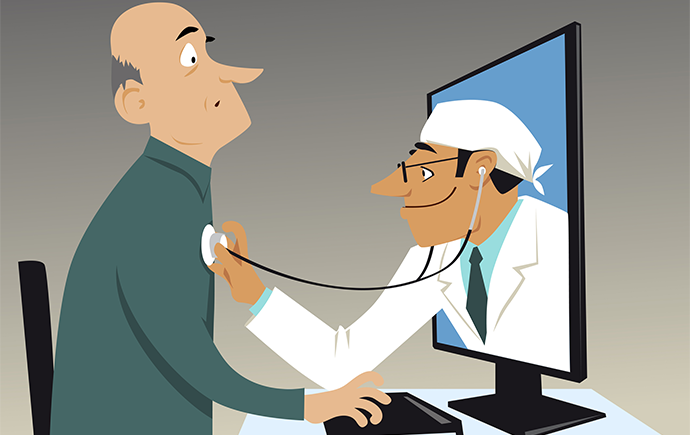What is Remote Therapeutic Monitoring Codes: RTM

What is Remote Therapeutic Monitoring?
Remote therapeutic monitoring represents a significant shift in healthcare delivery, leveraging technology to improve patient care and outcomes. By utilizing wearable devices, connected medical devices, and advanced software solutions, healthcare providers can monitor patients’ health remotely, provide timely interventions, and enhance patient engagement. Embracing this transformative approach has the potential to revolutionize healthcare, making it more accessible, personalized, and efficient for patients around the world.

Remote Therapeutic Monitoring Examples:
RTM encircles various examples of collecting and monitoring non-physiologic patient data related to therapeutic interventions. Some examples include:
- Glucose Meters for Diabetes:
Patients with diabetes can use remote glucose meters to monitor their blood sugar levels and transmit the data to their healthcare providers. This allows for monitoring of treatment adherence and adjustment of medication or lifestyle interventions as necessary.
- Heart Rate or Blood Pressure Monitors:
Remote monitoring devices for heart rate and blood pressure enable patients with cardiovascular conditions to track their vital signs at home. Healthcare providers can review the data to assess the effectiveness of treatment plans and make necessary adjustments.
- Continuous Surveillance Monitors:
These monitors are often used in cases where patients have conditions like dementia or are at risk of falls. They employ sensors or wearable devices to continuously monitor the patient’s movements and location. If an event such as a fall occurs, healthcare professionals can be alerted promptly for timely intervention.
- Musculoskeletal and Respiratory Conditions:
RTM can also involve monitoring therapeutic interventions and outcomes for conditions like musculoskeletal disorders and respiratory conditions. Patients may self-report data such as adherence to prescribed exercises, pain levels before and after exercise, and tracking of overall outcomes. This data helps healthcare providers assess treatment efficacy and modify plans accordingly.
On the other hand, remote patient monitoring (RPM) has traditionally focused on measuring symptoms and physiological parameters of chronic conditions such as cardiac diseases, diabetes, and asthma. Examples of RPM include wearable devices like Holter monitors, which can measure heart rhythms over an extended period and remotely detect heart conditions. These devices allow continuous monitoring of cardiovascular health and enable timely intervention if abnormalities are detected.
Both RTM and RPM play vital roles in remote monitoring, providing valuable data to healthcare providers for personalized care and treatment management.
About Remote Therapeutic Monitoring Physical Therapy:
Remote therapeutic monitoring in physical therapy involves the use of technology to collect and monitor patient data related to therapeutic interventions. It enables physical therapists to remotely track and assess factors such as treatment plan adherence, musculoskeletal outcomes, pain levels, and exercise tolerance. This data allows for personalized treatment adjustments, remote guidance, and timely interventions as needed.
Remote therapeutic monitoring in physical therapy enhances patient engagement, improves outcomes, and expands access to care beyond traditional in-person visits. RTM codes for physical therapy are used for remote monitoring of patients’ progress and outcomes.
RTM physical therapy
Remote Therapeutic Monitoring Devices:

Remote therapeutic monitoring utilizes various medical devices for the monitoring and management of respiratory and musculoskeletal conditions. Two commonly used devices are RPM weight scales and remote spirometers. RPM weight scales, traditionally used in remote physiologic monitoring and chronic care management, can also be incorporated into remote therapy. Remote spirometers provide a convenient way for patients to measure their forced expiratory volume (FEV) and other related data at home. The collected data from these devices is synchronized in near real-time with an RTM platform and then transmitted to the physician’s electronic health record (EHR).
- Wearable Devices:
Wearable devices such as smartwatches, fitness trackers, and medical sensors have gained significant popularity in recent years. These devices can monitor vital signs, activity levels, sleep patterns, and other relevant health parameters. They provide real-time data and can alert both patients and healthcare providers of any concerning changes, allowing for early intervention.
- Connected Medical Devices:
These devices are specifically designed to monitor and manage chronic conditions such as diabetes, hypertension, cardiac conditions, and respiratory diseases. Examples include blood glucose monitors, blood pressure monitors, ECG monitors, and spirometers. They transmit data wirelessly to healthcare providers, who can assess the patient’s condition remotely and make necessary adjustments to treatment plans.
- Ingestible Sensors:
Ingestible sensors are small electronic devices that patients can swallow like a pill. Once ingested, these sensors collect and transmit data about medication adherence, physiological parameters, and other relevant information. This technology enables healthcare providers to monitor patients’ medication intake and response to treatment remotely. RTM devices are used for remote monitoring of various health conditions and physiological parameters.
Remote Therapeutic Monitoring Software:
RTM software provides the infrastructure for data management, analysis, and communication, while remote therapeutic monitoring devices are the tools used to collect patient data and transmit it to the software for further processing and review. Both software and devices work in tandem to enable effective remote monitoring and management of patient’s health conditions.
RTM software serves as the platform or system that facilitates the collection, transmission, storage, and analysis of patient data. It manages and organizes the data received from the monitoring devices, allowing healthcare providers to access and review the information.
RTM software may include analytical tools that process the collected data to generate insights and trends, enabling healthcare providers to make informed decisions and adjustments to treatment plans. It enables communication channels between healthcare providers and patients, facilitating remote consultations, feedback, and alerts for any critical events or deviations in patient data.
- Telehealth Platforms:
Telehealth platforms serve as the backbone of remote therapeutic monitoring programs. They facilitate virtual consultations between patients and healthcare providers, allowing for real-time communication, video conferencing, and data sharing. These platforms often integrate with wearable devices and medical sensors, enabling seamless data collection and analysis.
- Data Analytics and Artificial Intelligence (AI):
Remote therapeutic monitoring generates vast amounts of patient data. Data analytics and AI algorithms play a crucial role in processing and interpreting this information, identifying patterns, and generating actionable insights. These technologies can help healthcare providers make informed decisions, personalize treatment plans, and detect early warning signs of deteriorating health.
- Improved Patient Convenience:
Remote therapeutic monitoring eliminates the need for frequent hospital visits, reducing travel time and associated costs for patients. It allows individuals to manage their health conditions from the comfort of their homes while maintaining regular communication with healthcare providers.
- Enhanced Patient Engagement:
By actively involving patients in their care, remote therapeutic monitoring promotes self-management and empowers individuals to make informed decisions about their health. Patients can access their health data, track progress, and receive personalized feedback, leading to increased engagement and motivation.
- Timely Intervention and Reduced Hospitalizations:
Real-time data transmission enables healthcare providers to identify potential health issues early on and intervene promptly. This proactive approach can help prevent complications, reduce hospital admissions, and improve overall patient outcomes.
- Cost Savings:
Remote therapeutic monitoring has the potential to reduce healthcare costs by minimizing hospital visits, preventing emergency room visits, and optimizing treatment plans. It can also provide an efficient way to allocate healthcare resources, ensuring that patients with the greatest need receive timely care.
How to Take Advantage of Remote Therapeutic Monitoring Codes

See Also:
- What Is CPH Professional Liability and Malpractice Insurance?
- RTM vs RPM Codes: Choosing the Right Strategy
- 5 Best Tennis Elbow Medical Devices: Tennis Elbow Splint
- Innovation in Physical Therapy Future & Trends
- What is Remote Therapeutic Monitoring Codes: RTM
- What are the Top Healthcare Analytics Companies
rtm devices, rtm cpt codes, rtm codes physical therapy, rtm billing codes, cms rtm codes, cms rtm,




